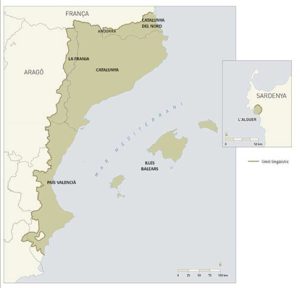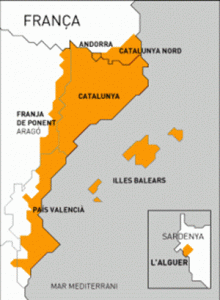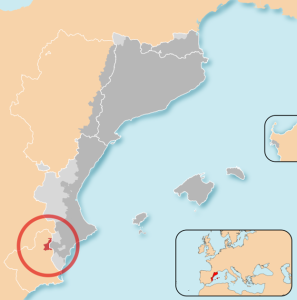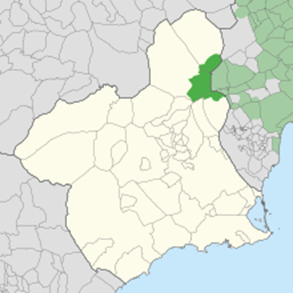Catalan
Catalan is considered a Romance language because it derives from Vulgar Latin. With regards to the place of Catalan inside the Romance world, Catalan is a western Romance language. Some scholars argue that Catalan belongs to the Ibero-Romanic group since Catalan phonological, morphosyntactic, and lexical features are common to Aragonese, Castilian, Galician, and Portuguese. Other linguists believe that Catalan belongs to the Gallo-Romanic group because it is closer to French and, especially, Occitan, which is a language spoken in the south of France and in certain areas of Spain (Vall d’Aran) and Italy (Gàrdia) (Lledó-Guillem, The Making of Catalan 3). In fact, on several occasions, Catalan has been placed in the so-called Occitano-Romance group, which highlights the similarities between these two languages. In any case, there is common agreement that Catalan is an independent language in the Romance world.
Contributor: Vicente Lledó-Guillem
Full Professor of Spanish
Hofstra University
Vicente.Lledo-Guillem@hofstra.edu
Click here to Download the PDF
Yasmine Beale-Rivaya
Project Director/Coordinator
yb10@txstate.edu
As far as the name of the language is concerned, “Catalan” or català is the most common term and the one used in academic circles: universities, conferences, and publications. However, there are other names to refer to the language. Some examples are valencià, mallorquí, menorquí, and eivissenc. These alternative terms may be used for three reasons: first, to describe the Catalan variety used in a particular region. In this case, valencià would be the Catalan variety used in the Region of Valencia; mallorquí in the island of Mallorca; menorquí in the island of Minorca, and eivissenc in the island of Eivissa (see maps 6 and 7). Valencià has been the most common term to refer to the Catalan language in the Valencian Region, where “Catalan” is very rarely used, especially among older generations. Moreover, in chapter six of the Valencian Constitution or Estatut d’Autonomia (1983), the language of the Region receives the name of valencià (https://www.cortsvalencianes.es/ca-va/composicionnormasest-autonomia/9925). Second, the regional terms may be used to refer to the common language of all the Catalan-speaking territory, i.e., as a synonym of “Catalan” as the general language. In fact, some scholars from the Valencian Region refer to the common language as “Catalan-Valencian” (see map 7). Finally, these terms have been used occasionally to designate independent languages from Catalan. This has been the case particularly with the term valencià, especially in the twentieth century, but it is not the dominant trend. For the sake of clarity, the term “Catalan” or català will be used in this introductory study to refer to the common language of all the Catalan-speaking lands.




Catalan is spoken in four independent nation states: Spain, France, Andorra, and Italy (see maps 1 and 2). Catalan is the only official language in Andorra with approximately 61,000 speakers. In Spain Catalan is spoken in five Autonomous Regions but it is only co-official with Castilian in three of these Regions: Catalonia, with an approximate number of 6,155,000 speakers; the Region of Valencia, where we must distinguish a Catalan-speaking area from a Castilian-speaking area. The Catalan-speaking area constitutes 75% of the Valencian territory and 87% of its population, with approximately 2,895,000 Catalan speakers. As indicated above, valencià is the popular and legal term to designate the language in this Region. The Castilian-speaking territory occupies different areas in the interior, west, and southern end of the Valencian Region (see maps 1, 2, and 3). The Balearic Islands is the third Autonomous Region of Spain where Catalan is co-official with Castilian, with around 777,000 Catalan-speakers, distributed mainly in the islands of Mallorca, Minorca, Eivissa, and Formentera.
Despite being a spoken language, Catalan is not co-official with Castilian in two other Spanish Autonomous Regions: the eastern Counties of the Region of Aragón, known as La Franja (La Litera, Bajo Cinca, Bajo Aragón-Caspe, Bajo Aragón, Matarraña) with 42,000 Catalan-speakers, and the County of Carxe in the Region of Murcia with about 600 speakers (see maps 3 and 4).
Catalan is also the native language of a certain segment of the population in two other European nation-states: France and Italy. In both countries Catalan is not an official language. Catalan is spoken in an extensive area of the Department of the Pyrénées-Orientales, which includes the historical districts of Rosselló (Roussillon) and Alta Cerdanya (Conflent, Vallespir, Capcir and Cerdagne) in the southeast of France. In the Catalan-speaking lands this area is known as Northern Catalonia with an approximate number of 131,000 Catalan speakers. However, we must bear in mind that the Department of the Pyrénées-Orientales does not correspond exactly to Northern Catalonia, since the former includes the small Occitan-speaking area known as Fenolleda (Fenoillèdes) (https://www.mercator-research.eu/fileadmin/mercator/documents/regional_dossiers/catalan_in_france_2nd.pdf 5-6) (see maps 1, 2, and 3). Catalan is also spoken in the city of l’Alguer (Alghero), in the island of Sardinia (Italy), with around 24,000 Catalan-speakers. Overall, if we include second-language speakers, the approximate total number of Catalan speakers is slightly over 10,000,000 (https://www.mercator-research.eu/fileadmin/mercator/documents/regional_dossiers/catalan_in_france_2nd.pdf 6).
Media Attributions
- Map1
- map2
- map3
- map4
